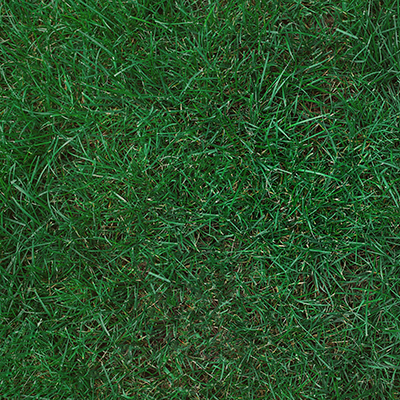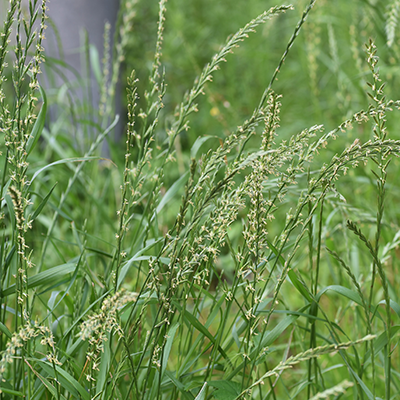October is the perfect time to re-seed your lawn, replenish thin or bare patches, or start with a new lawn. The cooler weather provides a Goldilocks scenario where the temperature, sunlight, and moisture levels are just right. When it’s time to re-seed your South Bend lawn, you’ve got several options. Keep reading to learn about the different types of cool-season grass varietals and which one is best for your situation.
Options For Seeding Your South Bend Lawn
Cool-Season Grass Species
Turfgrass comes in many varietals, but they all fall into two categories: cool-season grass and warm-season grass. Cool-season grass is the predominant type for the majority of lawns in the US. New England, the Midwest, Great Plains, and the Pacific Northwest are all home to cool-season grasses. This type of turfgrass is well-suited for cooler climates and can tolerate the extreme cold of winters. Warm-season grasses are found in the lower half of the US and do well in conditions where intense sun and heat are common. There’s a middle area of the country where these two kinds of grass overlap, but warm-season grasses need the temperature above 60 degrees consistently, or they will either die off completely or go dormant.
Remember the Goldilocks conditions? Well, fall is the ideal time for cool-season grass to flourish because the days are generally sunny but not as scorchingly hot as they would be in summer. Conversely, the evenings are cool and slightly damp but not yet freezing. This type of environment is what cool-season grass loves best.
Factors To Consider When Selecting Grass Seed
There are several things to keep in mind when selecting a grass seed varietal for your yard.
- Foot traffic – Will people or pets frequently walk on this grass?
- Heat – Does this part of your yard receive a lot of sun?
- Cold tolerance – Some cool-season grass does better than others against freezing temps.
- Drought – Summers can be quite hot and dry, and some varieties are more resilient.
- Shade – Does your yard have generous tree cover?
Each of the major cool-season grass types has its own pros and cons; some are better suited for certain conditions than others. As part of HydroSeed Incorporated’s lawn care services, our techs will help you determine which one is best for your yard.
Types Of Cool-Season Grasses
Kentucky Bluegrass
Kentucky bluegrass is the most common variety of grass seed in the US. It establishes quickly and aggressively, which makes it a great choice for repairing a patchy lawn as well as starting over from scratch. The shade of green is rich and fairly tolerant of dry summer conditions and foot traffic. So, if you have a family with dogs or children running about in the backyard, this might be the best choice for your home. That being said, Kentucky bluegrass loves bathing in direct sunlight, so if you have extensive tree coverage, it might not perform as well in the shade. It has a shallow root system compared to other grass varieties, so you will need to water it if it doesn’t receive adequate rain.
Tall Fescue
Of all the cool-season grasses, tall fescue is the toughest. It has a medium to high tolerance for pretty much anything you throw at it, and it doesn’t need as much water as other varietals like Kentucky bluegrass. Further, it can get by with fewer minerals, which means it is less likely to brown. It’s advisable to overseed tall fescue periodically since it tends to grow in clumps. If you want a uniform look on your lawn, overseeding from time to time will help with that. If your property is prone to erosion, tall fescue can help stabilize the soil thanks to its deep root zone.
Fine Fescue
Fine fescue blades are thinner, creating a softer look and feel for your lawn. This turfgrass has a grayish-green color and will do just fine in the shade compared to other varieties. It is fairly tolerant of drought-like tall fescue, which is a good thing to be with the ever-hotter summers we’ve been experiencing. It’s also reasonably tolerant of foot traffic and is a popular choice for families with children as this grass is much softer to the touch on bare feet. Make sure your fine fescue is well-nourished in summer when it may struggle with the heat.
Perennial Ryegrass
Like fine fescue, ryegrass has finer blades, which gives your lawn a gentler appearance. It will sprout quickly, which is great if you want to start from scratch with a brand new lawn this fall. And like fall fescue, its roots go deep, so if you’re concerned about erosion issues, this could be your winner. It’s known as “nurse grass” because it is often used to restore existing lawns that have undergone extensive damage. For example, if your lawn lost grass due to disease, drought, or construction. It is decently tolerant of shade and foot traffic and equivalent to Kentucky bluegrass in cold and heat tolerance. Like tall fescue, it likes to grow in clumps, so overseeding occasionally will help even out the look of your lawn.
Trust The Experts At HydroSeed Incorporated With Your Lawn Installation
It’s still not too late to enjoy a lush green lawn before winter! Whether you need to thicken up an existing lawn or start from scratch with a new one, the professionals at HydroSeed Incorporated will get the job done right. We offer both hydroseeding, our specialty, as well as overseeding services, depending on your situation and needs. And we don’t stop there. We also provide lawn maintenance services to keep your turfgrass fertilized and healthy all year long. If you’re curious about our offerings or would like to schedule an appointment, give us a call at 800-468-LAWN, or you can reach us online through our contact form here. If you’re interested in other lawn care topics, be sure to check out our blog page, where we post articles monthly!
You can also connect with us on Facebook and YouTube, where we post photos and videos of our work and share the latest discounts!

